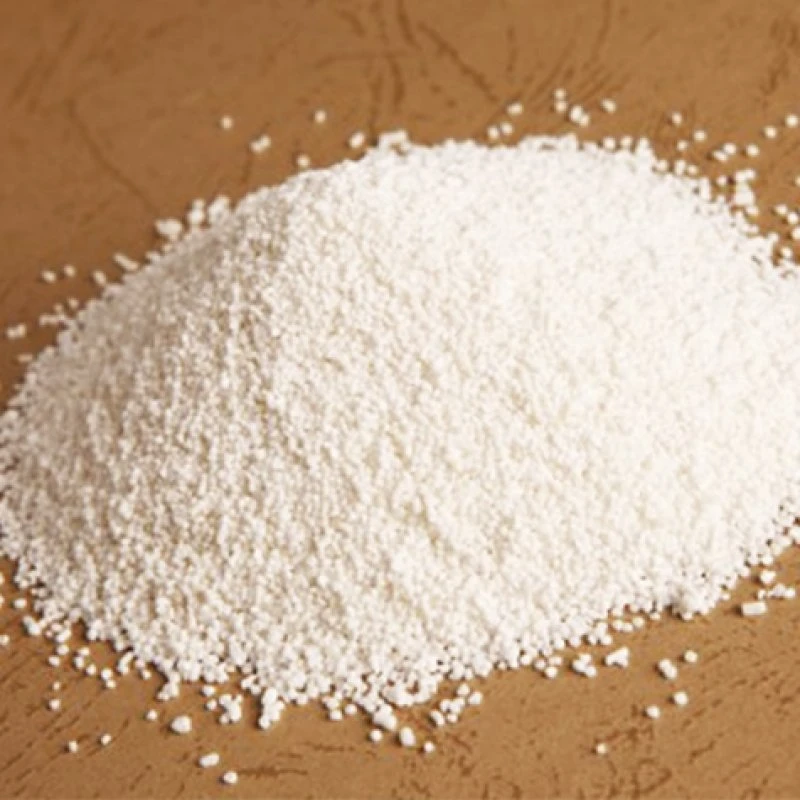



Understanding Polyacrylamide Properties and Applications in Various Industries
Understanding Polyacrylamide CAS Number and Its Applications
Polyacrylamide is a synthetic polymer that has garnered significant attention in various fields due to its versatility and effectiveness in a range of applications. With the CAS (Chemical Abstracts Service) number 9003-05-8, this compound is recognized in scientific literature, regulatory documents, and industrial applications. Understanding the properties, applications, and safety measures associated with polyacrylamide is essential for those working in industries such as water treatment, agriculture, and pharmaceuticals.
Properties of Polyacrylamide
Polyacrylamide is formed through the polymerization of acrylamide monomers, resulting in a polymer chain that can vary in molecular weight. The properties of polyacrylamide can be modified by adjusting its molecular weight or by introducing various functional groups. One of its key features is its high water solubility, which makes it an excellent choice for applications that require the polymer to dissolve in aqueous environments.
The polymer can exist in various forms, including anionic, cationic, or non-ionic, depending on its charge characteristics. This variation allows for tailored applications—for example, anionic polyacrylamides are often used in more alkaline environments, while cationic types are effective in slightly acidic conditions. This flexibility is one of the reasons polyacrylamide is widely used across different industries.
Applications in Various Industries
1. Water Treatment One of the primary uses of polyacrylamide is in water treatment processes. It functions as a flocculant, helping to aggregate suspended particles in water, leading to more efficient sedimentation. This property makes it invaluable in municipal water treatment plants and industrial wastewater treatment facilities, where separating solids from liquids is crucial for environmental compliance.
2. Agriculture In agriculture, polyacrylamide is utilized to enhance soil structure and water retention. Its ability to retain moisture can significantly benefit crop production, especially in arid regions. The polymer forms a gel-like substance that helps soil to retain water, reduce erosion, and improve the efficiency of irrigation systems.
3. Oil Recovery The petroleum industry also benefits from polyacrylamide. It is used in enhanced oil recovery processes, where it helps to increase the viscosity of water injected into oil reservoirs. This injection aids in displacing oil and enhancing the efficiency of extraction operations.
polyacrylamide cas number

4. Pharmaceuticals In the pharmaceutical field, polyacrylamide is used in drug delivery systems. Its biocompatibility and adjustable release properties make it suitable for developing gels and hydrogels that can deliver drugs in a controlled manner.
5. Cosmetics The cosmetic industry employs polyacrylamide in various formulations, from lotions to hair products. Its thickening properties help stabilize emulsions and improve the texture of products, enhancing the overall user experience.
6. Electrophoresis In molecular biology, polyacrylamide gels are standard for electrophoresis, a technique used to separate macromolecules like proteins and nucleic acids based on size and charge. Its customizable pore size allows researchers to fine-tune the separation process to meet specific experimental needs.
Safety and Environmental Considerations
While polyacrylamide is useful across many applications, it is essential to consider its safety and environmental impact. The acrylamide monomer is classified as a potential neurotoxin and carcinogen, which raises concerns about exposure during manufacturing and use. Thus, it is vital for industries to adhere to safety regulations and handle polyacrylamide products with caution, utilizing protective gear and following proper disposal guidelines.
Moreover, environmental regulations may dictate how polyacrylamide can be used, particularly in aquatic environments to prevent unintended harm to ecosystems. Responsible usage and adherence to regulatory standards are crucial for minimizing any potential adverse effects.
Conclusion
With its CAS number 9003-05-8, polyacrylamide stands out as a highly valuable polymer across numerous industries. Its properties and abilities to function as a flocculant, soil conditioner, and drug delivery agent demonstrate its broad applicability. However, understanding the safety implications and regulatory concerns associated with its use is crucial for ensuring its benefits are realized without compromising human health or the environment. As research and technology advance, the scope of polyacrylamide’s applications is likely to expand, further solidifying its significance in modern industrial practices.
-
Why Sodium Persulfate Is Everywhere NowNewsJul.07,2025
-
Why Polyacrylamide Is in High DemandNewsJul.07,2025
-
Understanding Paint Chemicals and Their ApplicationsNewsJul.07,2025
-
Smart Use Of Mining ChemicalsNewsJul.07,2025
-
Practical Uses of Potassium MonopersulfateNewsJul.07,2025
-
Agrochemicals In Real FarmingNewsJul.07,2025
-
Sodium Chlorite Hot UsesNewsJul.01,2025










